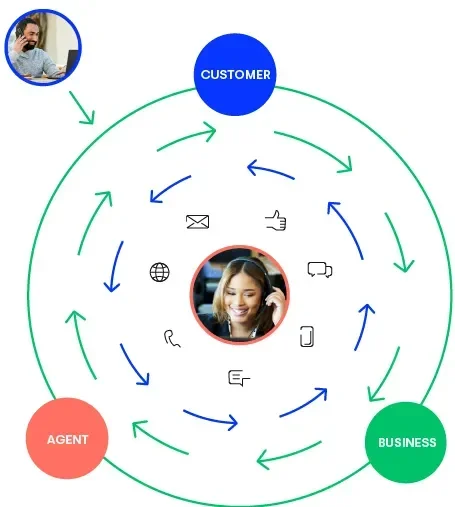Motivate and Inspire Agents to Achieve Goals
It’s difficult to consistently achieve your objectives when agents’ individual actions aren’t aligned with company goals. Contact center or call center performance management from Five9 helps you create the necessary alignment, while inspiring agents to perform even better. Performance transparency and continuous feedback keeps everyone informed on where KPI performance stands and what they can focus on to improve. Help everyone stay engaged, whether they work remotely or in-house, with an easy-to-use performance dashboard.

Realize Results Using Actionable Insights
-
Role-based Dashboards
Role-based dashboards provide tailored, actionable information at multiple levels: agents, supervisors, managers, and executives get web-based access to critical information.
-
Real-time, Historical, and External Data
Aggregate data from external systems and consolidate with Five9 real-time and historical information to create a single view of the truth across your business.
-
Automated Alerts
Automatically receive alert notifications when performance objectives are not being met to make proactive corrections.
-
Customizable KPIs and Metrics
Create KPIs from a comprehensive set of pre-defined metrics or create your own metrics to meet unique business needs.
-
Wallboards
Increase organizational transparency and focus on performance with pre-defined wallboard templates or create your own that incorporate leaderboards, videos, slide decks, and more.
The process of actually getting everyone working at home was really seamless. Having dashboards and metrics that employees could view—to not only see how they were doing, but how they were doing in comparison to the rest of the people in the same group who were no longer in the same place—was really beneficial to keep the team together and competing even though we weren’t together in one office.
Games and Challenges
- Gamification helps agents remain focused, engaged, and motivated with a variety of pre-defined games and challenges, including personalized avatars associated with their rewards and achievements.
Flexible Rewards
- Virtual rewards include coins, gems, badges, and experience points, or provide real-world rewards through an online marketplace.
Game Simulation
- Increase confidence that games will achieve your expected results with simulation using historical data to check likely results before going live with them.
Customizable Avatars
- Avatars give agents a fun way to express themselves and showcase their achievements with configurable body styles, clothes, accessories, and pets.
Permission-based Control
- Permission settings provide total control over access to functionality and information. This ensures users have the ability to perform the tasks they need, while being restricted from accessing unauthorized information.
Resources To Help You Get Started
Five9 Performance Dashboard
Access to information is incredibly important for contact centers, and the ability to take that information and make it actionable is a vital part of being successful.
Five9 Gamification
Essential training and everyday tasks completed through game-like activity make people more productive and happier at work.

Use real-time data collected from your customers to provide actionable insights for your agents and business.


Agent Empowerment
Empower your agents so they can focus on delivering a more human experience.

Business
Agility
Manage your agents with empathy while delivering impact to the business.



